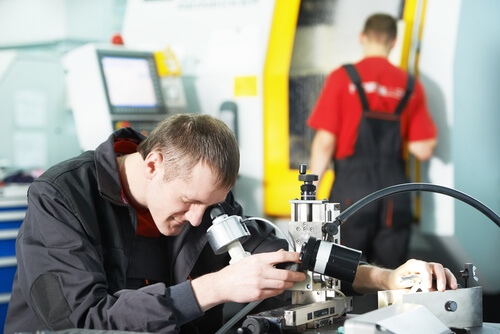The world of industrial maintenance is hectic, demanding and intensive. Even when working in the world of metrology, it can be hard to understand the differences between alignment, balancing and vibration. In this post, we will provide you an in-depth overview of each term and what role they play to ensure the health of your equipment.
Alignment
In rotating machinery, it is important that all components be perfectly aligned. The continuity of angular alignment in rotating machinery and the centerline coincidence of their rotating components is very essential. Various components in machinery relate to each other in a system by couplings, whether flexible or rigid.
Flexible couplings allow room for some error when aligning, whereas rigid coupling necessitates that components be aligned perfectly. In the case of flexible coupling, it allows more angular misalignment while others permit more centerline coincidence error. It is very crucial to understand the tolerances of the rotating machinery specifically about the correct aligning and coupling.
Balancing
The act of making the effective mass rotating components dynamically and statistically equal about their rotating axis is known as balancing. According to the Law of Thermodynamics, an object always seeks its lowest energy state. If an offset exists between the center of rotation and center of mass in rotating machinery, objects will naturally want to rotate or fall in order to send a high mass point to the lowest point. This means an object will seek to be near to Earth owing to gravity. This basically is what static balancing is all about.
On the other hand, there is dynamic balancing. This form of balancing is slightly different. Unlike static balancing, objects in dynamic balancing rotate in centrifugal forces in order to take effect on the rotation center. When an object is rotating at very high speeds, conditions that are out of balance can plastically deform it as the high mass point rotates past the highest point of gravity.
When motion deforms a material, conditions that are out of balance can cause increased deformation. This can also cause disastrous failure by material yield or failure by fatigue. Measuring vibration in a system helps to analyze dynamic unbalance. When measured under special conditions, one can pin-point where the mass issues are arising from and then correct them by subtracting or adding weight.
Vibration
Vibration is broken down in three physical properties. They include acceleration, velocity and motion. Vibration can be defined as the testing and observation of cyclical or random movements of systems or objects. You can relate vibration to the study of sound waves. When applied in industrial settings, scientists, engineers and technicians quantify acceleration, velocity and motion in Time Waveform. By analyzing and measuring these properties using software and instruments, frequency results can be attributed to specific components and machinery.
Analyzers today use spectrum to detect specific vibration signatures to particular rotors, mounts, couplings, bearing types and more. Vibration equipment is commonly used in baseline readings and comparative analysis. Technicians measure the vibration of various components and machinery per a specific routine and this way they are able to detect when there are changes in the way a system behaves.





